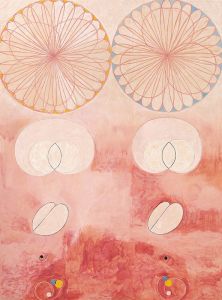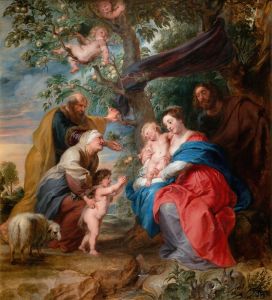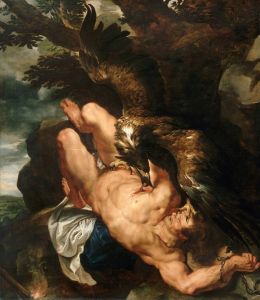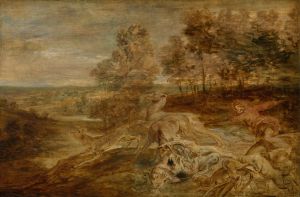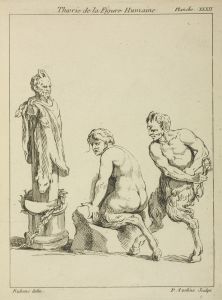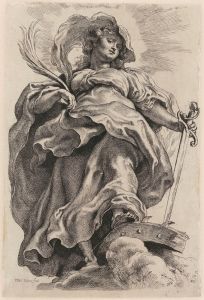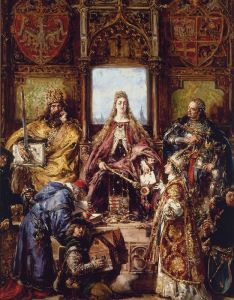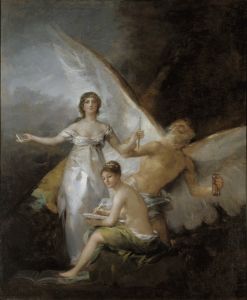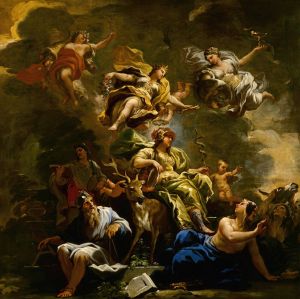
Minerva Overcoming Ignorance
A hand-painted replica of Peter Paul Rubens’s masterpiece Minerva Overcoming Ignorance, meticulously crafted by professional artists to capture the true essence of the original. Each piece is created with museum-quality canvas and rare mineral pigments, carefully painted by experienced artists with delicate brushstrokes and rich, layered colors to perfectly recreate the texture of the original artwork. Unlike machine-printed reproductions, this hand-painted version brings the painting to life, infused with the artist’s emotions and skill in every stroke. Whether for personal collection or home decoration, it instantly elevates the artistic atmosphere of any space.
Peter Paul Rubens, a prominent Flemish Baroque painter, is renowned for his dynamic compositions, vibrant color palette, and grandiose style. One of his works, "Minerva Overcoming Ignorance," exemplifies his mastery in portraying allegorical themes through classical mythology. Although specific details about this painting are scarce, Rubens' oeuvre often reflects his deep engagement with mythological and allegorical subjects, influenced by his classical education and extensive travels.
"Minerva Overcoming Ignorance" likely depicts Minerva, the Roman goddess of wisdom and strategic warfare, triumphing over ignorance. This theme aligns with Rubens' interest in classical mythology and his ability to convey complex narratives through art. Minerva, equivalent to the Greek goddess Athena, is often portrayed as a symbol of wisdom, knowledge, and the arts. In artworks, she is typically depicted wearing a helmet and armor, carrying a shield or spear, and accompanied by an owl, her sacred animal symbolizing wisdom.
Rubens' depiction of Minerva would have been consistent with his style, characterized by dynamic movement, robust figures, and dramatic contrasts of light and shadow. His ability to infuse energy and emotion into his paintings made his mythological scenes particularly compelling. Rubens often used allegory to convey moral and philosophical messages, and "Minerva Overcoming Ignorance" would have served as a visual representation of the triumph of knowledge and enlightenment over ignorance and darkness.
The painting's composition likely features Minerva in a commanding pose, possibly engaging in a symbolic act of defeating or dispelling ignorance. Rubens' skill in rendering human anatomy and his use of vibrant colors would enhance the dramatic effect of the scene. The background might include classical architectural elements or a landscape, providing a suitable setting for the mythological narrative.
Rubens' work was highly sought after by patrons across Europe, and his paintings often adorned the palaces and churches of the elite. His ability to convey complex themes through accessible and visually striking compositions made him a favorite among collectors and art enthusiasts. "Minerva Overcoming Ignorance," like many of Rubens' works, would have been appreciated not only for its artistic merit but also for its intellectual and cultural significance.
While specific details about "Minerva Overcoming Ignorance" are limited, Rubens' broader body of work provides insight into how he might have approached this subject. His paintings often reflect a synthesis of classical themes with Baroque dynamism, creating works that are both intellectually engaging and visually captivating. Through his art, Rubens contributed to the dissemination of classical knowledge and the celebration of intellectual achievement, themes that resonate in "Minerva Overcoming Ignorance."
In summary, "Minerva Overcoming Ignorance" by Peter Paul Rubens is an allegorical painting that likely depicts the triumph of wisdom over ignorance, a theme consistent with Rubens' interest in classical mythology and allegory. Although specific details about the painting are not well-documented, Rubens' style and thematic interests provide a framework for understanding how he might have approached this subject.






